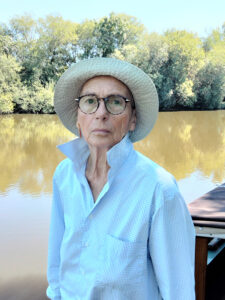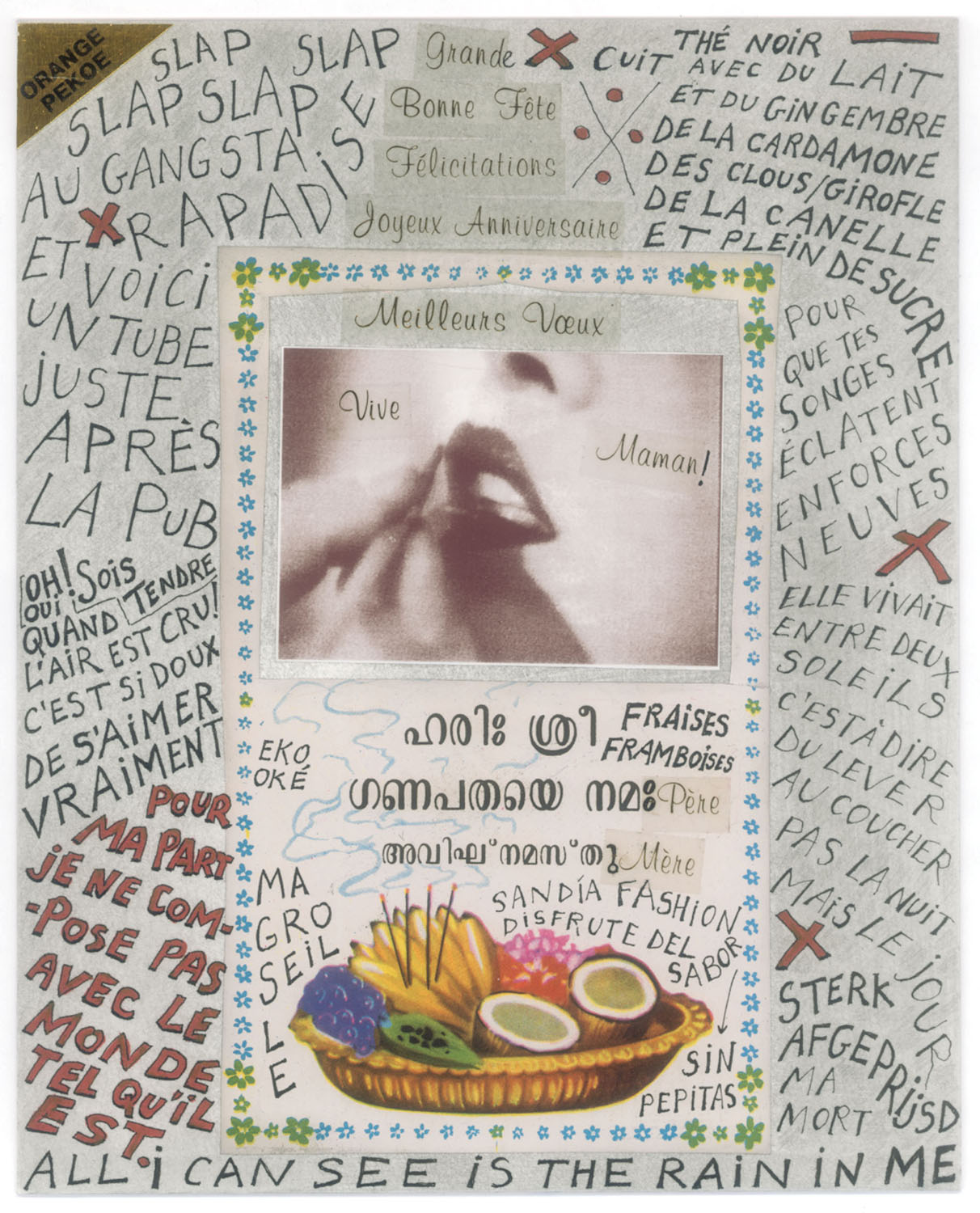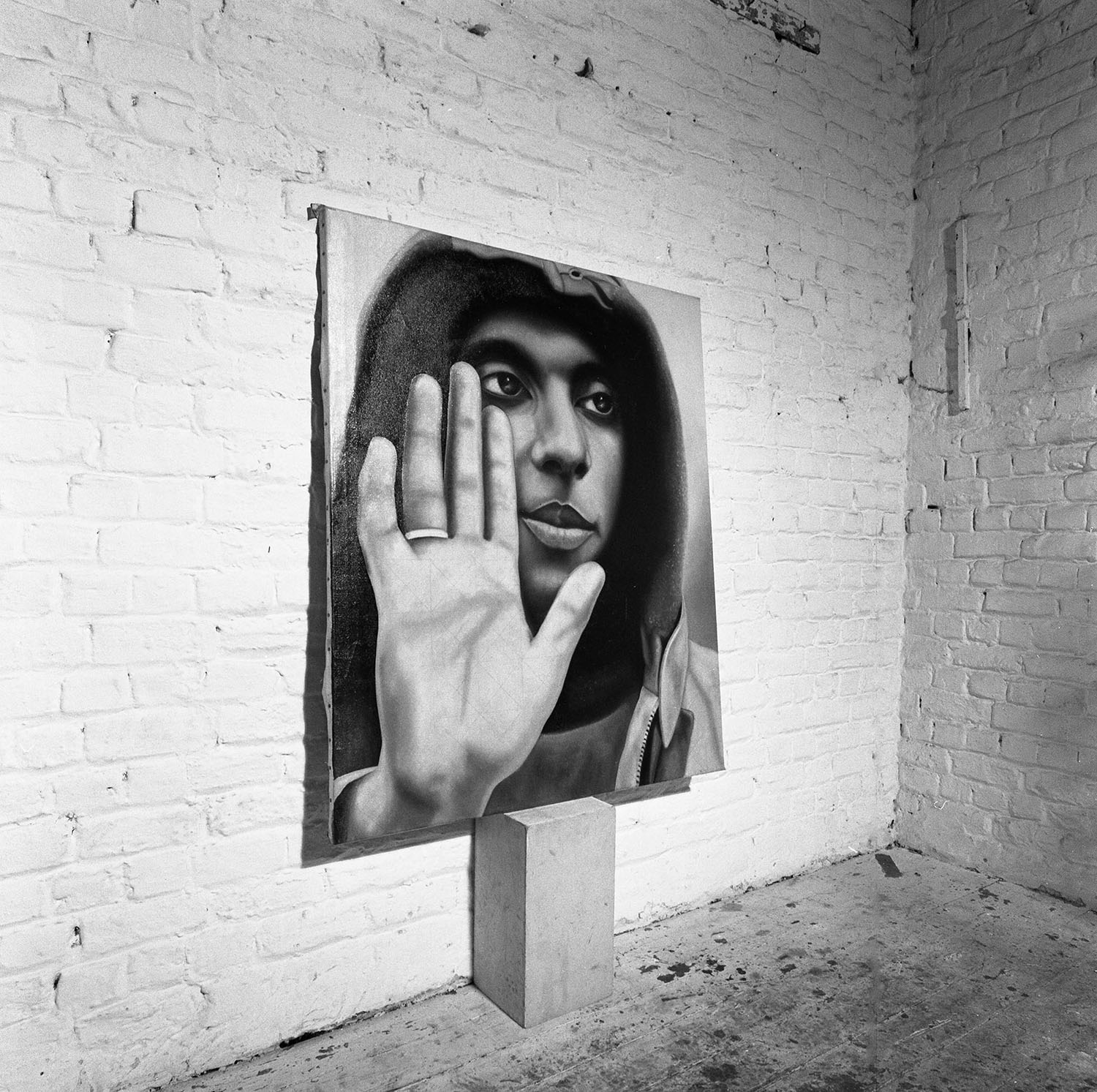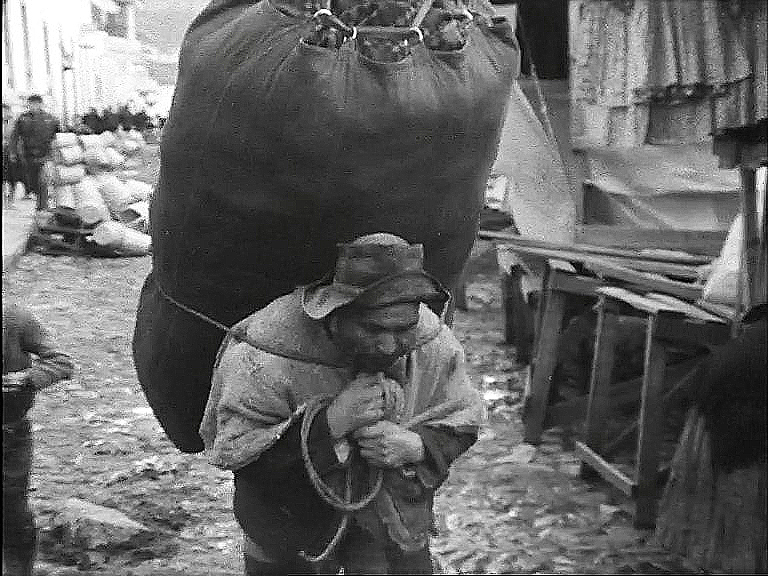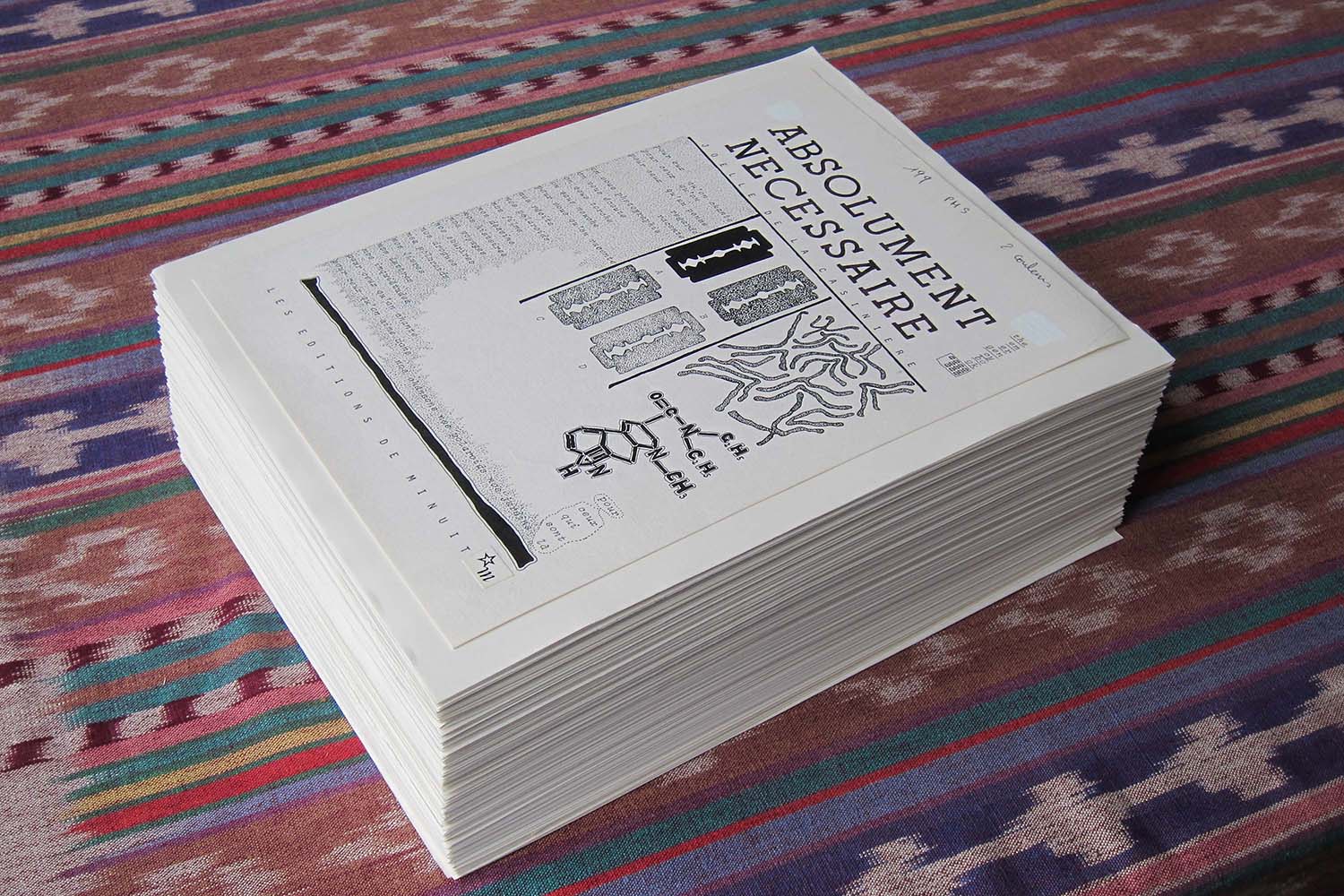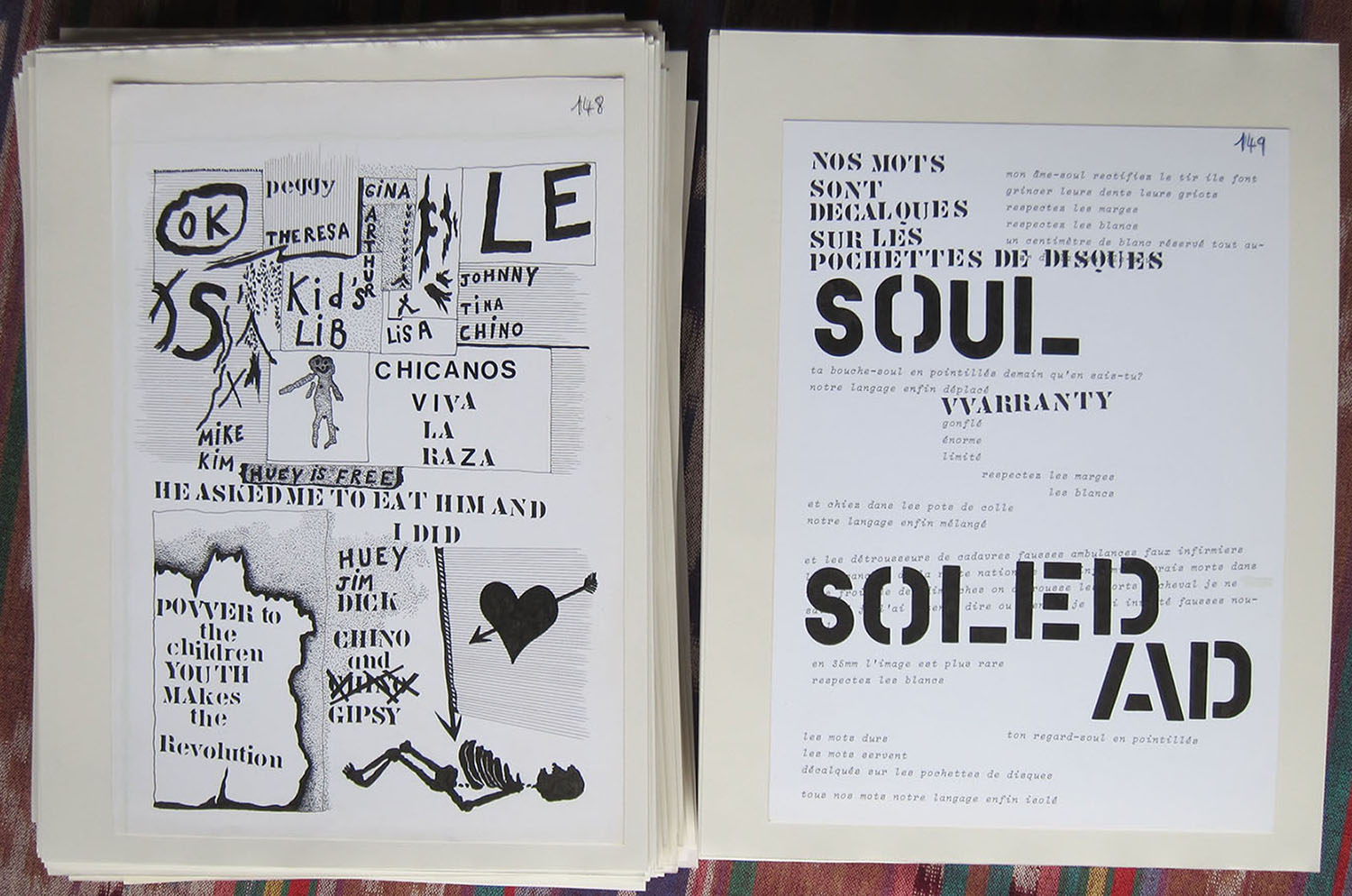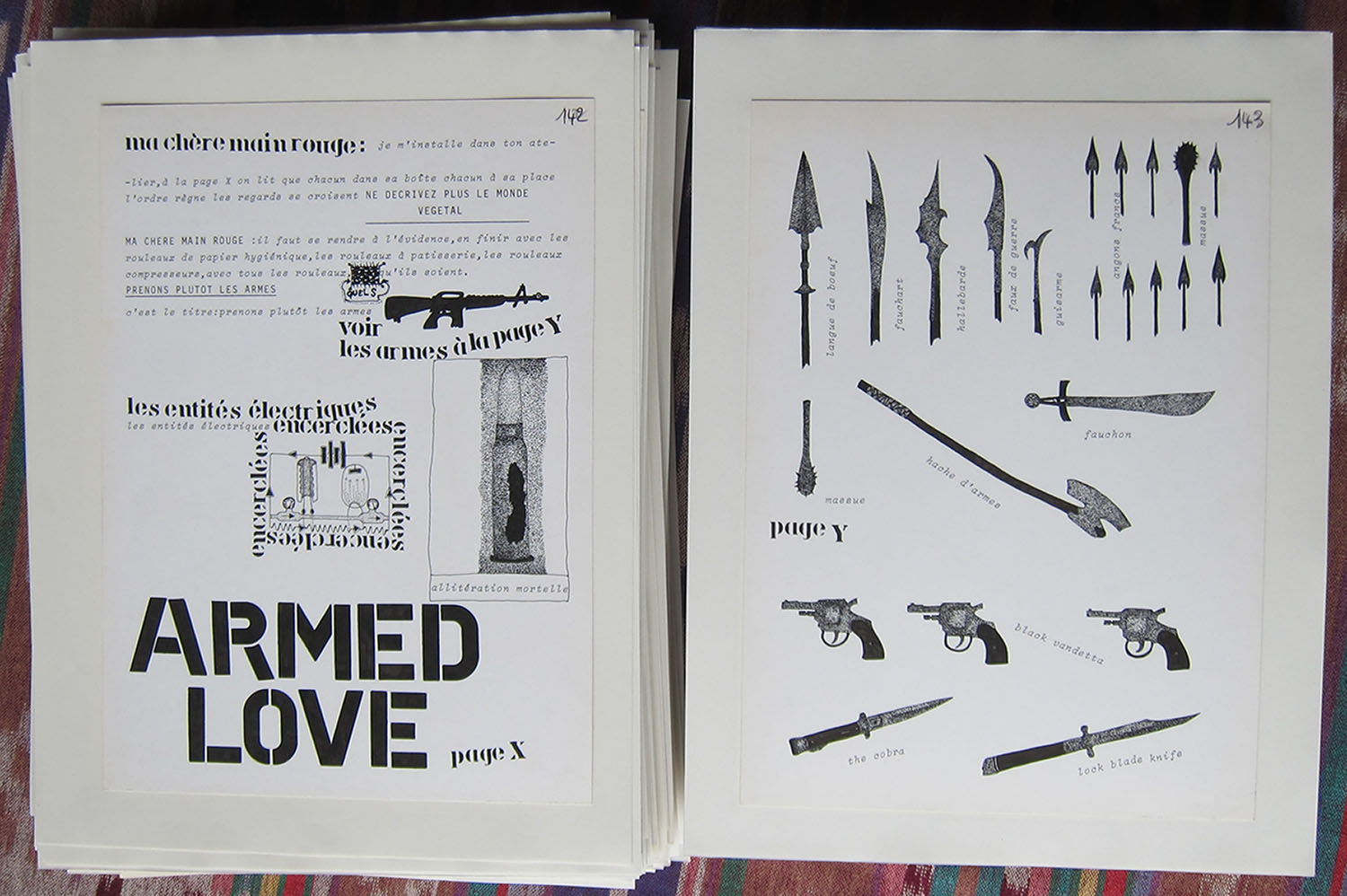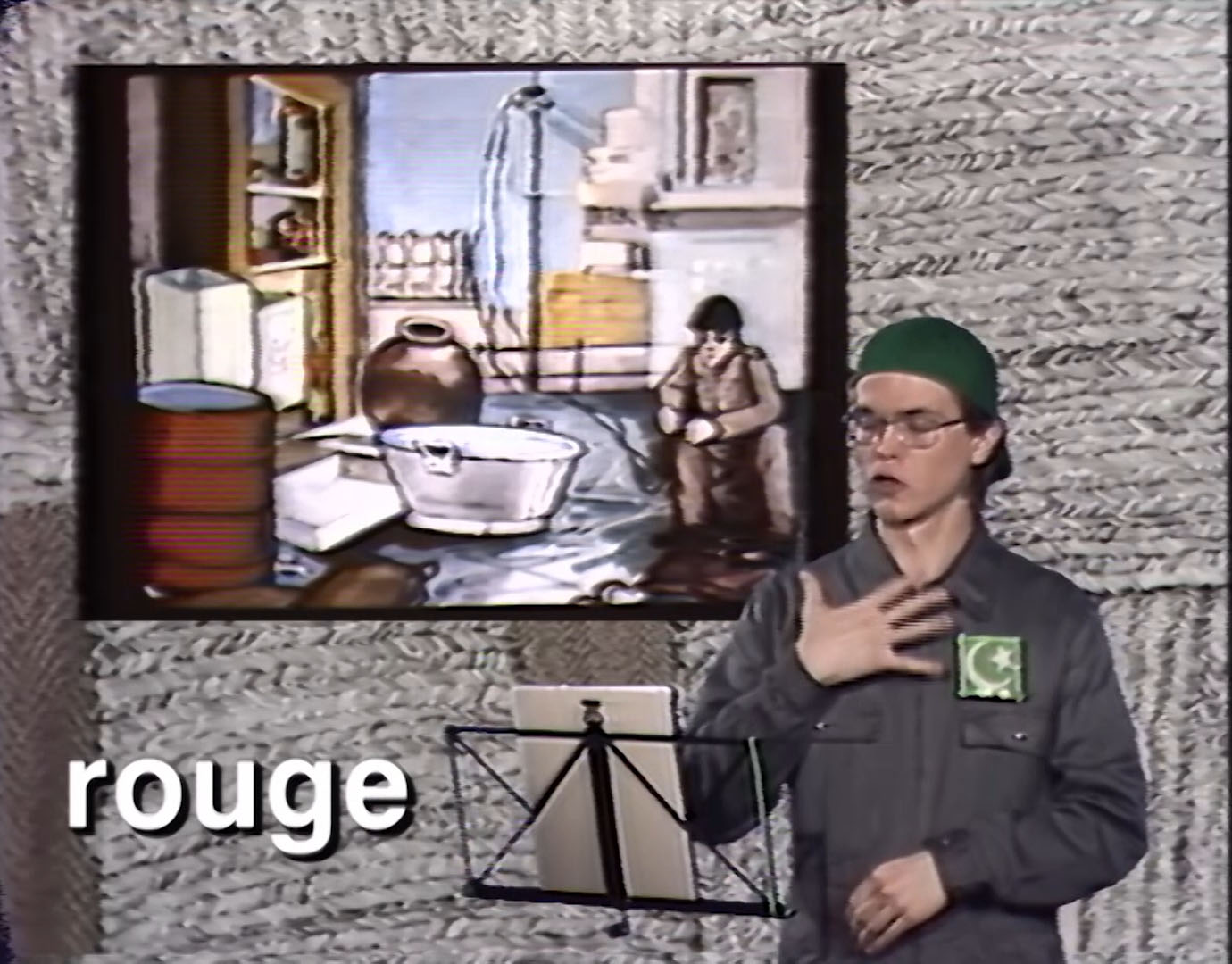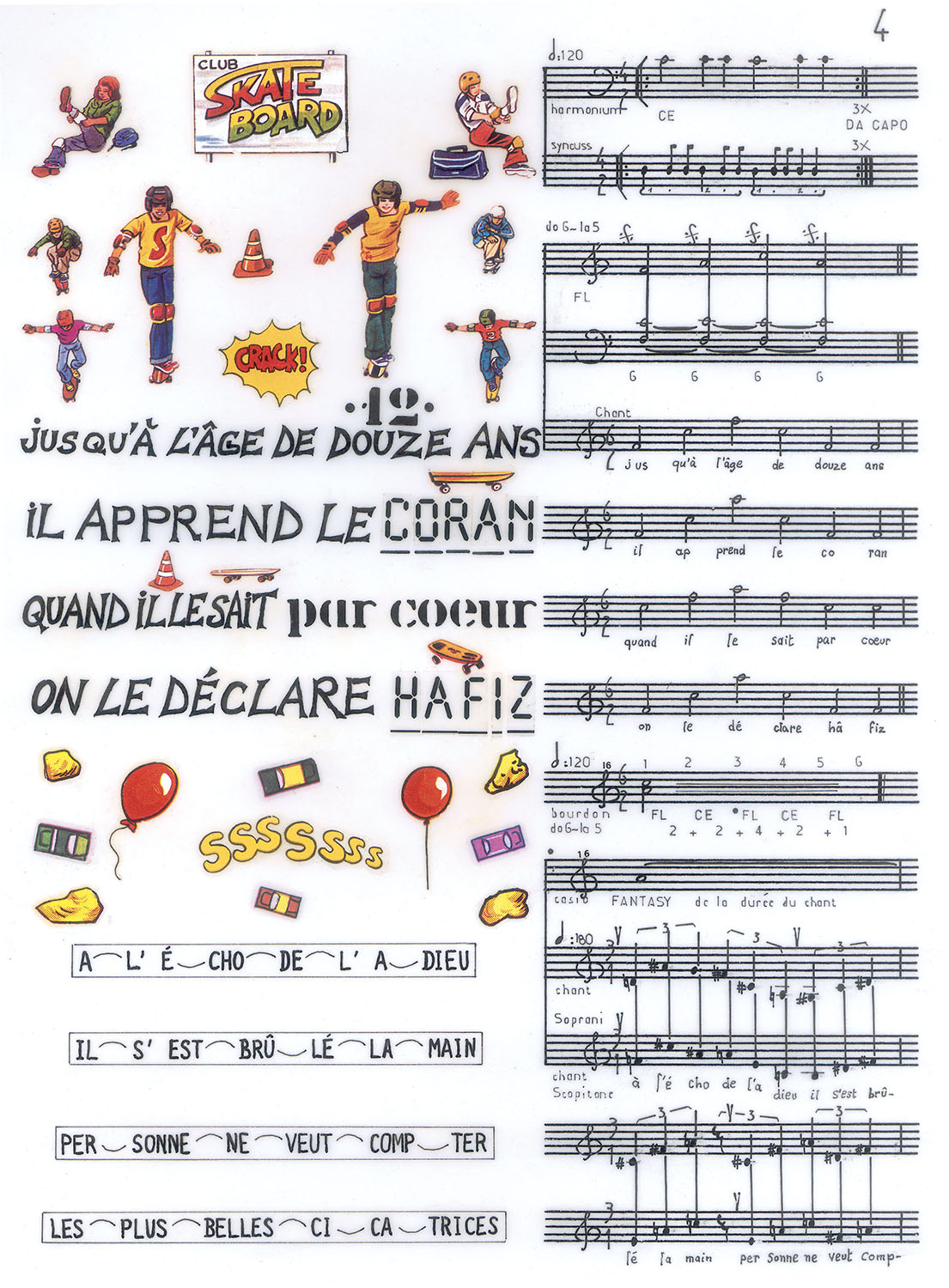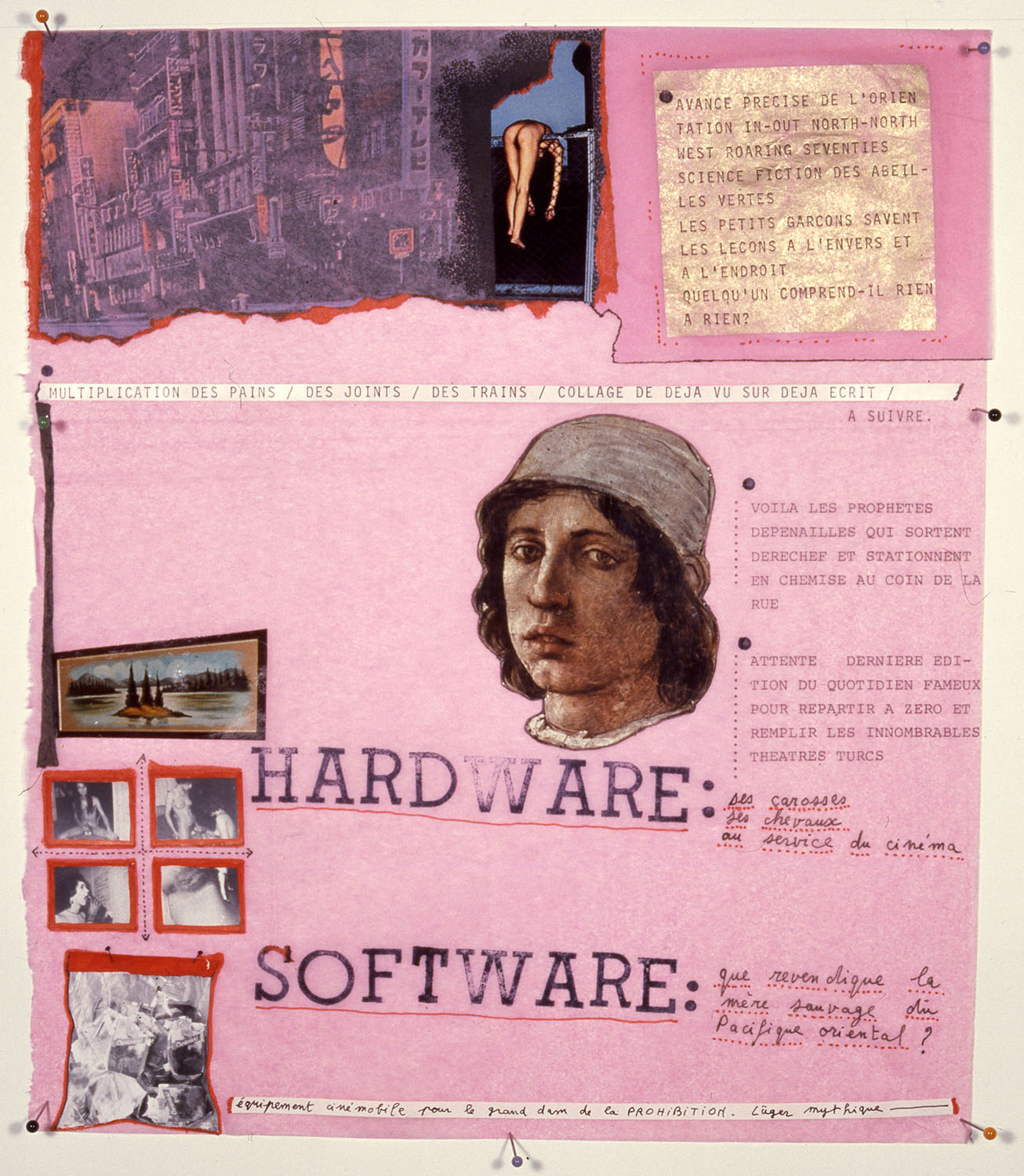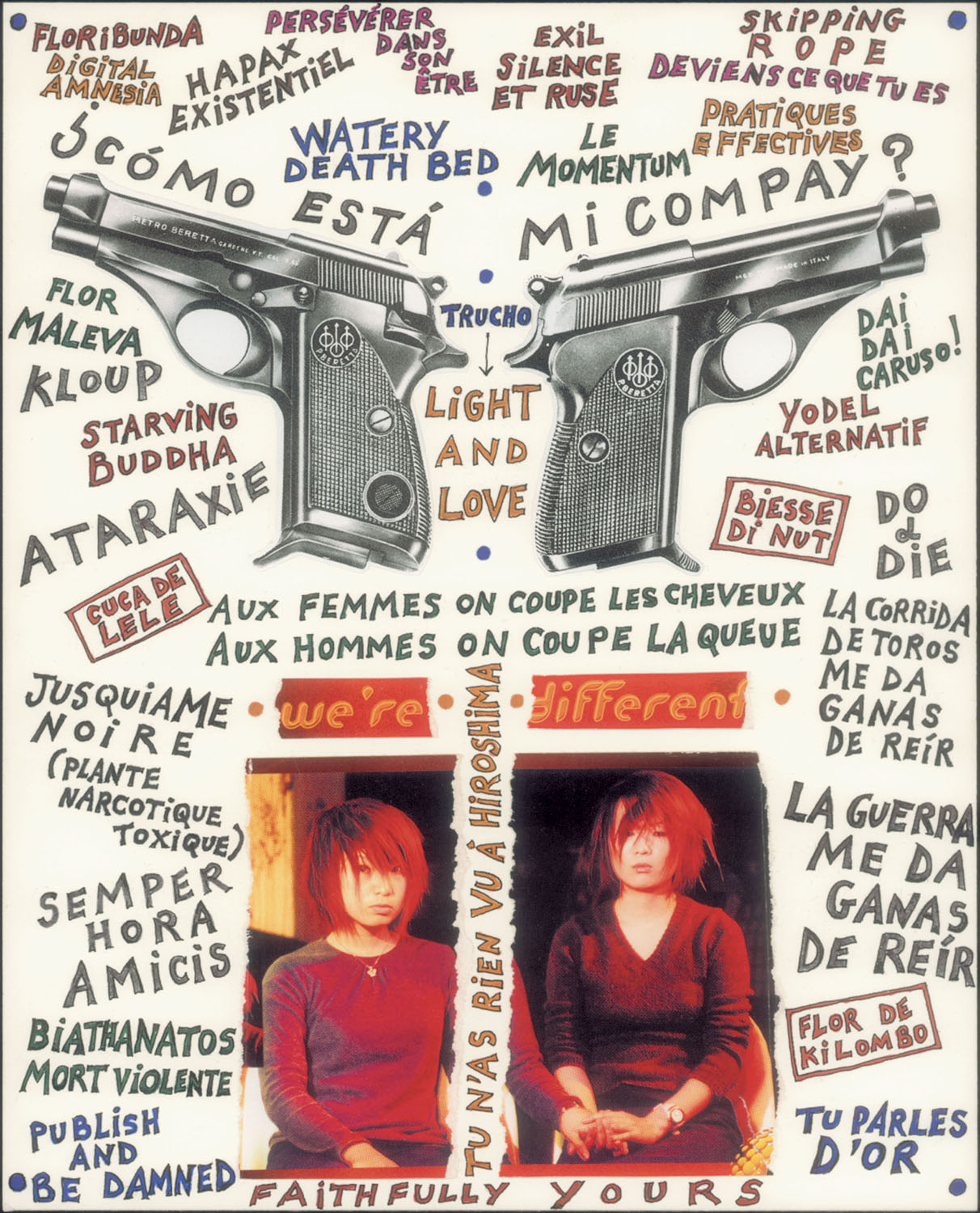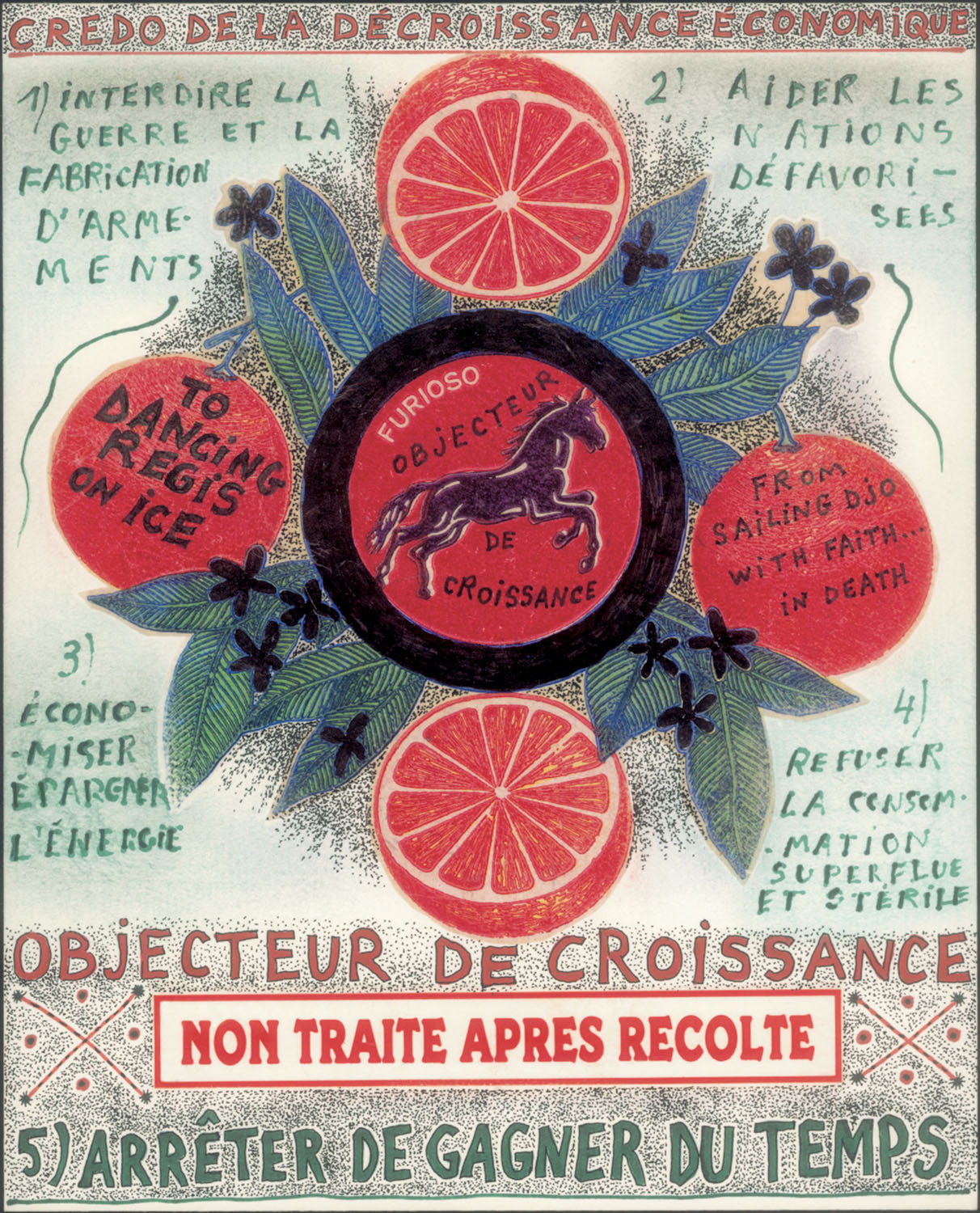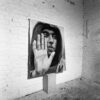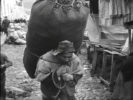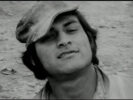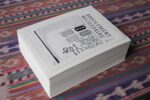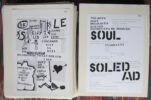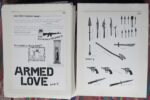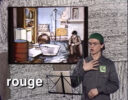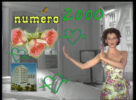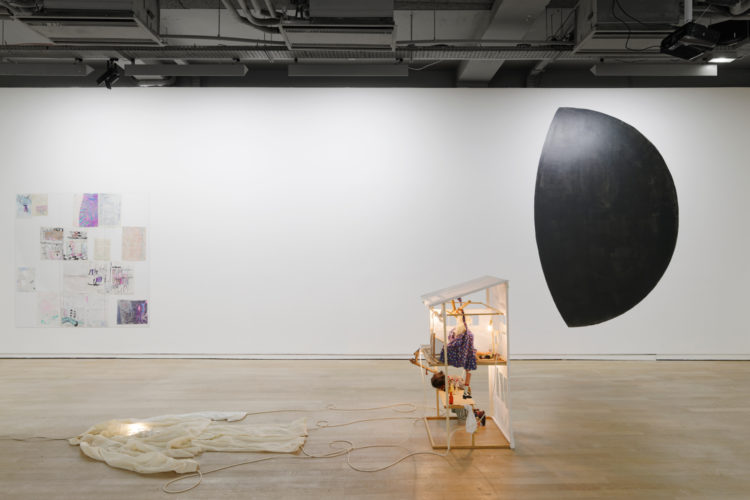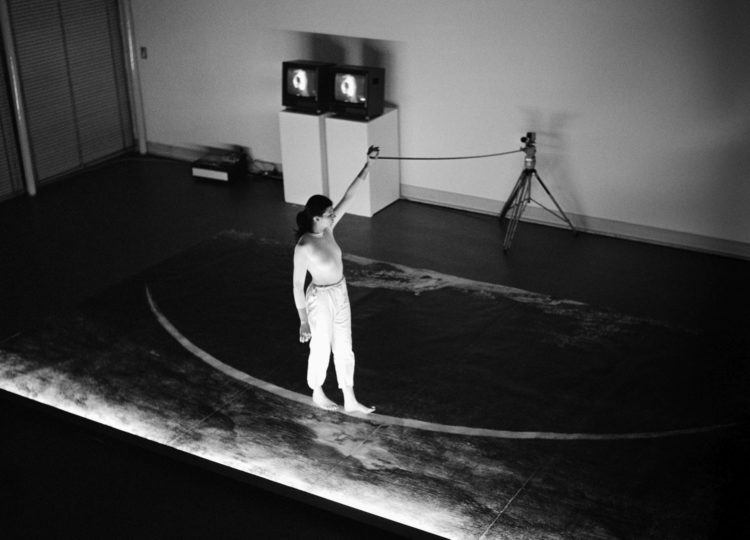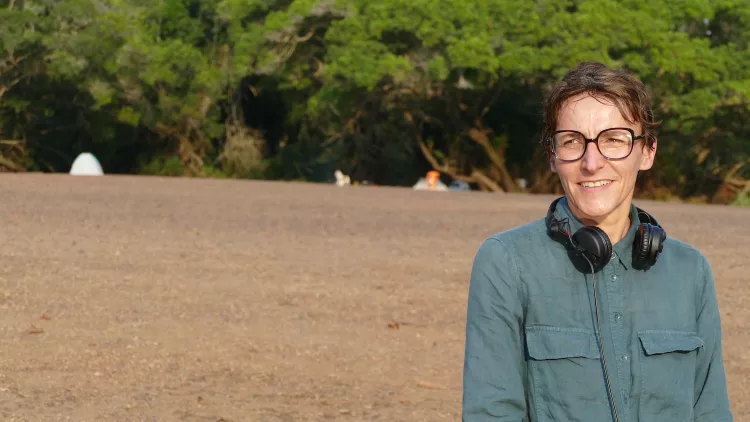Joëlle de La Casinière
La Casinière, Joëlle de, Jotta, Ana, Van Kerckhoven, Anne-Mie, Three Moral Tales, exh. cat., Malmö Konsthall, Malmö (June 15 – August 25, 2019), Dijon, Les Presses du réel, 2019
→La Casinière, Joëlle de, Le Bon Usage télévisuel, Brussels, Montfaucon 1986
→La Casinière, Joëlle de, Manu Script, Montreal, Dérives, 1980
Tout doit disparaître, Musée d’Art Contemporain de la Haute-Vienne, Château de Rochechouart, February 28 – September 13, 2020
→50 tablotins musiqués, Argos, Brussels, February – March 2014
→Documenta 8, Kassel, June – September, 1987
Nomadic artist.
Joëlle de La Casinière grew up first in Madrid, and then in France, where she started to paint while studying literature. In 1965 she moved to Brussels where she continues to lead an “exemplary life” according to art critic and curator François Piron, who has organised several recent exhibitions of her work. For over five decades she has worked independently at the intersection of visual arts, poetry and film, on the fringes of the worlds of contemporary art and publishing and their trends.
In the mid-1960s J. de La Casinière sold her paintings and possessions and travelled to Latin America. There she began making films, first with Carlos Ferrand, and later Michel Bonnemaison, which documented the transformation of the social and economic landscape, particularly in Colombia and Peru. At the same time she developed a writing style that juxtaposed various elements: handwritten poems in different languages, advertisements, postcards, photographs, graffiti, drawings and collages, creations intended for her friends and family. The result was a graphic, multimedia form of poetry that transmits a cacophony of information, a form that the artist has explored ever since, utilising mixed media to make works that respond to and inform each other. Her series Tablotins for instance, comprised of over five hundred poem-paintings, also feeds into her numerous handmade books, which she has transformed into films and video experiments since the 1980s.
While nomadism remains part of J. de La Casinière’s daily life, directly influencing her production of light, mobile forms, her work is also characterised by an engagement with community life and collective creation. In 1972 she founded the Montfaucon Research Center alongside a chosen family of artist friends, notably M. Bonnemaison, poets Sophie Podolski and Al Berto, painter Olimpia Hruska, filmmaker Enrique Ahriman and musician Jacques Lederlin. In an era marked by sexual liberation and the struggle for emancipation they experimented and envisioned values radically opposed to consumerism and individualism. Refusing the conventions of a “commercial” career, with the Montfaucon Research Center J. de La Casinière forged a body of work that is often funny, and somewhat disillusioned, provocatively identifying the social issues of her era while mounting a critique of mass media.
This is particularly evident in her video works from the early 1980s, in which she reflects on the rhetoric of television imagery and discourse from a transhistorical perspective. The film Grimoire magnetic [Magnetic Spellbook, 1982], presented at Documenta 8 in Kassel in 1987, appears as a multimedia graphic poem adapted from Louis Massignon’s biography of the great 10th-century mystic poet Mansur al-Hallaj, in which different modes of narration are superimposed in overlapping layers: writing, voice, images and sign language. Between 1970 and 1990 J. de La Casinière and the members of the Montfaucon Research Center produced more than twenty films and musical video poems inspired by the writings of Marshall McLuhan, to be broadcast on Belgian and French television and shown at numerous festivals in Europe and the United States. Her own works and those of the Montfaucon Research Center have recently entered major public collections, including those of the Centre Pompidou in Paris, the Museo Nacional Centro de Arte Reina Sofía in Madrid and the Musée d’Art Contemporain de la Haute-Vienne in Rochechouart.



